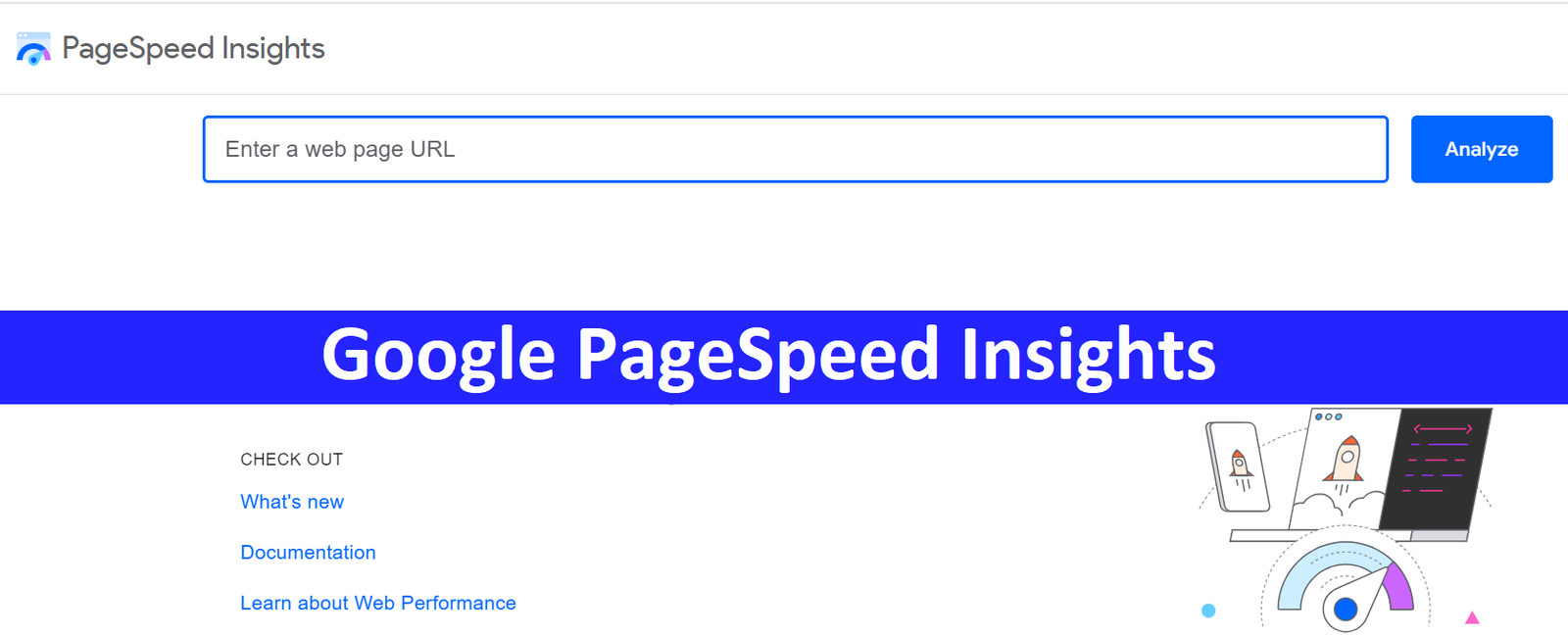
Google PageSpeed Insights is a powerful tool that helps website owners optimize their website performance. It provides insights into how fast a website loads and provides suggestions on how to improve its speed. With more and more users accessing websites on mobile devices, it has become increasingly important for websites to be optimized for speed. Google PageSpeed Insights can help website owners achieve this goal.
One of Google PageSpeed Insights’ key features is its ability to analyze a website’s performance on both mobile and desktop devices. This is important because mobile devices have different hardware and network capabilities than desktop devices. By analyzing a website’s performance on both types of devices, website owners can ensure that their website is optimized for all users. Additionally, Google PageSpeed Insights provides suggestions on how to improve a website’s performance, which can help website owners make the necessary changes to improve their website’s speed.
Another important feature of Google PageSpeed Insights is its use of Core Web Vitals. Core Web Vitals are a set of metrics that measure how users experience a website’s speed, responsiveness, and visual stability. By using Core Web Vitals, website owners can gain a better understanding of how users interact with their website and make the necessary changes to improve the user experience. Overall, Google PageSpeed Insights is a valuable tool that can help website owners improve their website’s performance and provide a better user experience for their visitors.
Understanding Google PageSpeed Insights
Google PageSpeed Insights is a tool that analyzes a web page’s performance on mobile and desktop devices and provides suggestions on how to improve the page’s speed and user experience. The tool generates two types of data: lab data and field data. Lab data is collected in a controlled environment, while field data is collected from real-world users.
Core Concepts and Terminology
To understand how PageSpeed Insights works, it’s important to be familiar with some of the core concepts and terminology. Here are some key terms you should know:
- PageSpeed Score: This is a score out of 100 that represents how well a web page is optimized for speed. A higher score indicates better optimization.
- Opportunities: These are suggestions for improving a page’s speed and user experience.
- Diagnostics: These are issues that PageSpeed Insights has identified on a web page. Diagnostics can range from minor issues to critical problems that need to be addressed immediately.
- First Contentful Paint (FCP): This is the time it takes for a web page to display its first piece of content. A fast FCP is important for providing a good user experience.
- Time to Interactive (TTI): This is the time it takes for a web page to become fully interactive. A fast TTI is important for providing a good user experience.
The Role of PageSpeed in SEO
PageSpeed is an important factor in search engine optimization (SEO). Google has stated that page speed is a ranking factor for both desktop and mobile searches. A fast-loading website can help improve user experience and increase engagement, which can lead to higher search engine rankings.
Interpreting Scores and Results
When using PageSpeed Insights, it’s important to understand how to interpret the scores and results. A score of 90 or above indicates that a web page is well optimized for speed. Scores between 50 and 89 indicate that there is room for improvement, while scores below 50 indicate that significant improvements are needed.
In addition to the PageSpeed Score, PageSpeed Insights provides a list of opportunities and diagnostics. Opportunities are suggestions for improving a page’s speed and user experience, while diagnostics are issues that need to be addressed. It’s important to prioritize the opportunities and diagnostics based on their impact on user experience and the effort required to implement them.
Overall, PageSpeed Insights is a valuable tool for improving a web page’s speed and user experience. By understanding the core concepts and terminology, the role of Page Speed in SEO, and how to interpret the scores and results, website owners and developers can make informed decisions about optimizing their web pages for speed.
Optimizing with PageSpeed Insights
Google PageSpeed Insights is a powerful tool that helps website owners analyze their site’s performance and identify areas for improvement. By optimizing your website with PageSpeed Insights, you can improve your site’s user experience, increase engagement, and boost your search engine rankings.
Performance Metrics
PageSpeed Insights provides a detailed analysis of your website’s performance, including metrics such as:
- First Contentful Paint (FCP): the time it takes for the first piece of content to appear on the screen.
- Speed Index: the time it takes for the visible parts of the page to be displayed.
- Time to Interactive (TTI): the time it takes for the page to become fully interactive.
- Total Blocking Time (TBT): the time it takes for the page to become responsive to user input.
By analyzing these metrics, you can identify areas where your website is underperforming and take steps to improve its speed and responsiveness.
Optimization Strategies
PageSpeed Insights provides a range of optimization strategies that can help you improve your website’s performance. These strategies include:
- Minimizing HTTP requests: reducing the number of requests your website makes to external resources can help improve page load times.
- Optimizing images: compressing and resizing images can help reduce their file size and improve page load times.
- Minimizing JavaScript and CSS: reducing the amount of JavaScript and CSS on your website can help improve page load times.
- Leveraging browser caching: caching resources on the user’s browser can help improve page load times for repeat visitors.
By implementing these strategies, you can significantly improve your website’s performance and provide a better user experience for your visitors.
Technical Implementation
Implementing the optimization strategies recommended by PageSpeed Insights requires technical knowledge and expertise. Some of the technical implementation steps include:
- Enabling compression: compressing resources such as HTML, CSS, and JavaScript can help reduce their file size and improve page load times.
- Minifying resources: removing unnecessary characters from HTML, CSS, and JavaScript files can help reduce their file size and improve page load times.
- Setting up server-side caching: caching resources on the server can help improve page load times for first-time visitors.
- Optimizing server response time: reducing the time it takes for the server to respond to requests can help improve page load times.
By working with a web developer or technical expert, you can ensure that your website is optimized for performance and provides a great user experience for your visitors.
Frequently Asked Questions
How can I improve my website’s performance using Google PageSpeed Insights?
Google PageSpeed Insights provides a comprehensive analysis of a website’s performance on both mobile and desktop devices. It offers suggestions on how to improve the website’s speed and user experience. Some of the recommendations include optimizing images, leveraging browser caching, and minimizing JavaScript and CSS. By following these recommendations, website owners can significantly improve their website’s performance and user experience.
What factors affect my Google PageSpeed Insights score?
The Google PageSpeed Insights score is based on several factors, including server response time, render-blocking resources, and image optimization. The score is calculated on a scale of 0 to 100, with a higher score indicating better performance. However, it’s important to note that the score is not the only metric that matters. Website owners should also consider other factors such as user experience, conversion rates, and bounce rates.
How does Google PageSpeed Insights differ from other speed testing tools?
Google PageSpeed Insights is a free tool that provides both lab and field data about a website’s performance. It offers detailed recommendations on how to improve a website’s speed and user experience. Other speed testing tools may provide similar data, but they may not offer the same level of detail or actionable recommendations.
Can Google PageSpeed Insights help in optimizing mobile website speed?
Yes, Google PageSpeed Insights is designed to help optimize both mobile and desktop website speed. It provides recommendations that are specific to mobile devices, such as optimizing images for mobile, using responsive design, and reducing server response time.
What are the best practices recommended by Google PageSpeed Insights for a faster website?
Google PageSpeed Insights recommends several best practices for a faster website, including optimizing images, leveraging browser caching, and minimizing JavaScript and CSS. Other recommendations include using a content delivery network (CDN), reducing server response time, and minimizing redirects.
Is there a cost associated with using Google PageSpeed Insights for website analysis?
No, Google PageSpeed Insights is a free tool that anyone can use to analyze their website’s performance. There are no hidden costs or fees associated with using the tool.




